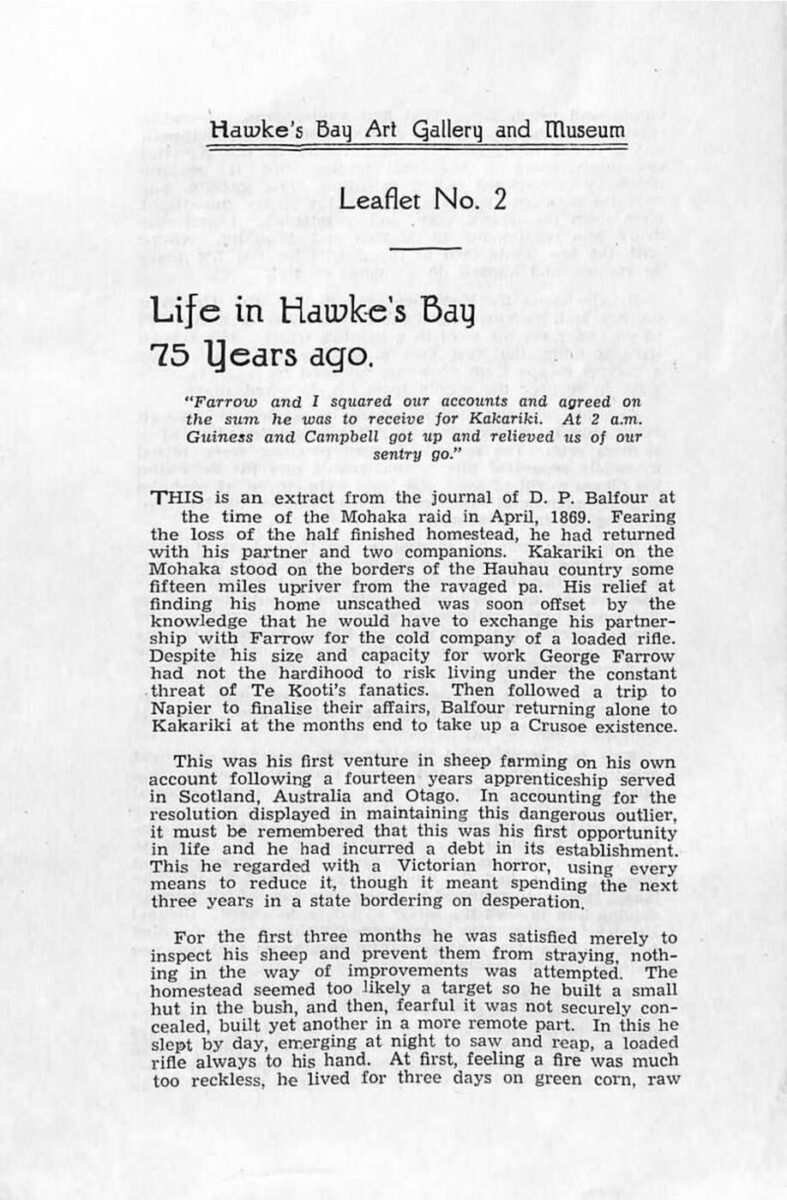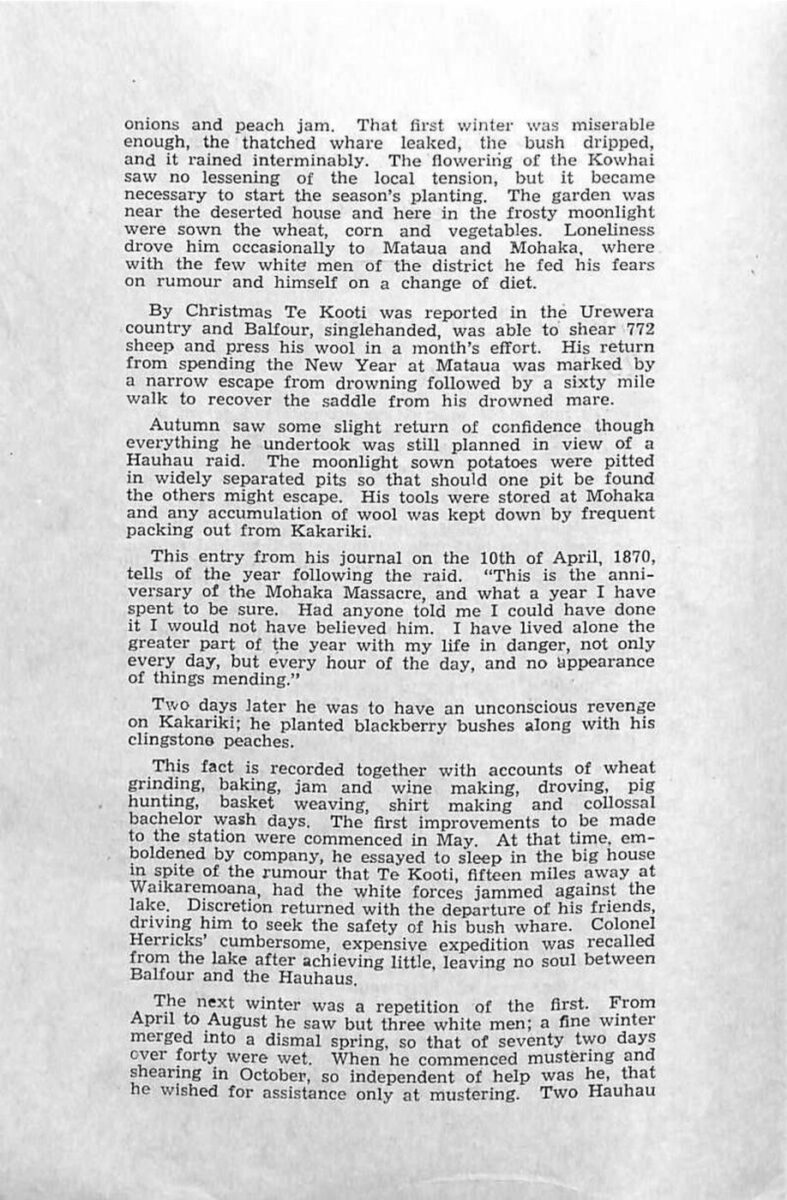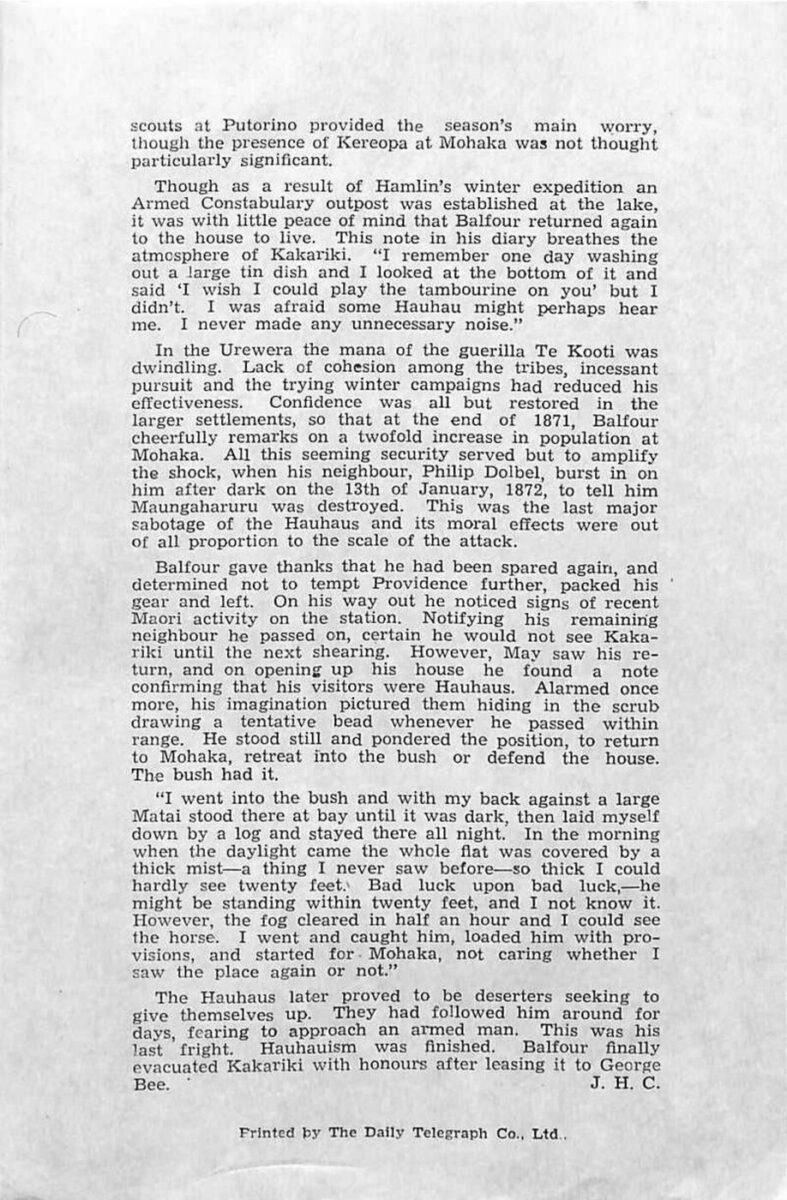onions and peach jam. That first winter was miserable enough, the thatched whare leaked, the bush dripped, and it rained interminably. The flowering of the Kowhai saw no lessening of the local tension, but it became necessary to start the season’s planting. The garden was near the deserted house and here in the frosty moonlight were sown the wheat, corn and vegetables. Loneliness drove him occasionally to Mataua and Mohaka, where with the few white men of the district he fed his fears on rumour and himself on a change of diet.
By Christmas Te Kooti was reported in the Urewera country and Balfour, singlehanded, was able to shear 772 sheep and press his wool in a month’s effort. His return from spending the New Year at Mataua was marked by a narrow escape from drowning followed by a sixty mile walk to recover the saddle from his drowned mare.
Autumn saw some slight return of confidence though everything he undertook was still planned in view of a Hauhau raid. The moonlight sown potatoes were pitted in widely separated pits so that should one pit be found the others might escape. His tools were stored at Mohaka and any accumulation of wool was kept down by frequent packing out from Kakariki.
This entry from his journal on the 10th of April, 1870, tells of the year following the raid. “This is the anniversary of the Mohaka Massacre, and what a year I have spent to be sure. Had anyone told me I could have done it I would not have believed him. I have lived alone the greater part of the year with my life in danger, not only every day, but every hour of the day, and no appearance of things mending.”
Two days later he was to have an unconscious revenge on Kakariki: he planted blackberry bushes along with his clingstone peaches.
This fact is recorded together with accounts of wheat grinding, baking, jam and wine making, droving, pig hunting, basket weaving, shirt making and colossal bachelor wash days. The first improvements to be made to the station were commenced in May. At that time, emboldened by company, he essayed to sleep in the big house in spite of the rumour that Te Kooti, fifteen miles away at Waikaremoana, had the white forces jammed against the lake. Discretion returned with the departure of his friends, driving him to seek the safety of his bush whare. Colonel Herricks’ cumbersome, expensive expedition was recalled from the lake after achieving little, leaving no soul between Balfour and the Hauhaus.
The next winter was a repetition of the first. From April to August he saw but three white men; a fine winter merged into a dismal spring, so that of seventy two days over forty were wet. When he commenced mustering and shearing in October, so independent of help was he that he wished for assistance only at mustering. Two Hauhau














Do you know something about this record?
Please note we cannot verify the accuracy of any information posted by the community.